
It is no surprise that beta testers are the backbone of any successful mobile app beta testing program.
These individuals provide valuable insights and feedback that can help your developers fix many issues and add new features before releasing your product to the public.
As testers are vital to your program’s success, you want to pay special attention to your approach in picking them.
In this article, we delve into the best practices for recruiting testers for your app’s beta phase.
By the end, you will hopefully have a better understanding of what makes a good beta tester and the steps you can take to find them.
Table of Contents
Make your requirements clear
While recruiting beta testers for your mobile app, it’s essential to make your requirements and expectations clear.
Communicating these prerequisites upfront will help ensure you attract the right candidates for your beta testing program and discourage users who don’t meet them from applying.
The requirements can be written down in a clear and concise document and usually contain the following elements:
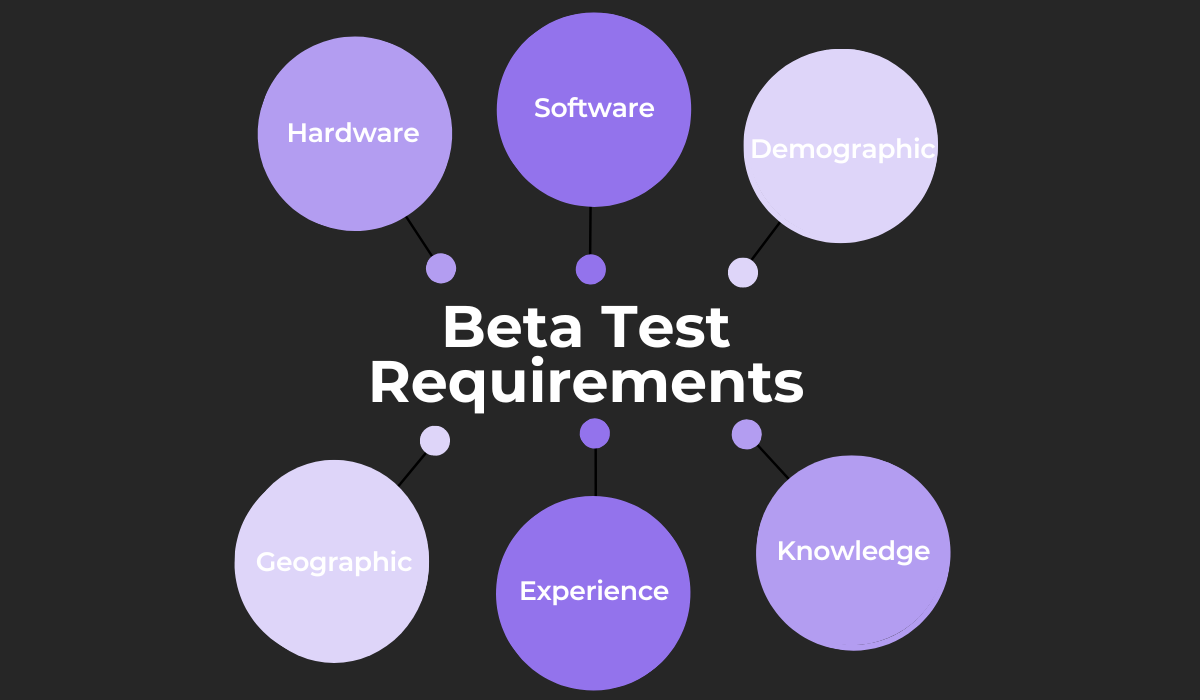
The most basic requirements are hardware and software specifications, which concern the devices and operating systems (OS) that can run your app.
For example, if the beta version of your app is designed to run on high-end Android devices, sharing this info will help users who don’t have compatible devices from being frustrated and wasting their time downloading your app.
Also, you might want to communicate any demographic or geographic requirements to dissuade users who don’t fall in your specific target group from applying.
Your demographic requirements can be:

If you are creating an app for young, middle-class parents, for example, you can include this info in your requirements page, since you want feedback from this particular group of people.
Finally, sometimes it’s necessary to include what experience or knowledge you’d like your beta testers to have—especially if you require detailed, highly technical feedback.
Your beta program may require testers to send comprehensive reports that include specific technical information about any bugs or defects they encounter, so you’d do well to accept those testers who have some experience in this area.

Get unreal data to fix real issues in your app & web.
Or, to ease this process and avoid deterring potential candidates who aren’t as experienced, you might want to try using a simple but powerful reporting tool like Shake.
Shake is a bug and crash reporting tool that is highly useful for giving feedback.
It automates a lot of the process—adding over 70 key metrics to reports automatically, which can help your team figure out what caused any defects to occur.
Through a simple user interface, beta testers can send feedback on any issues they might encounter, all from within your app.
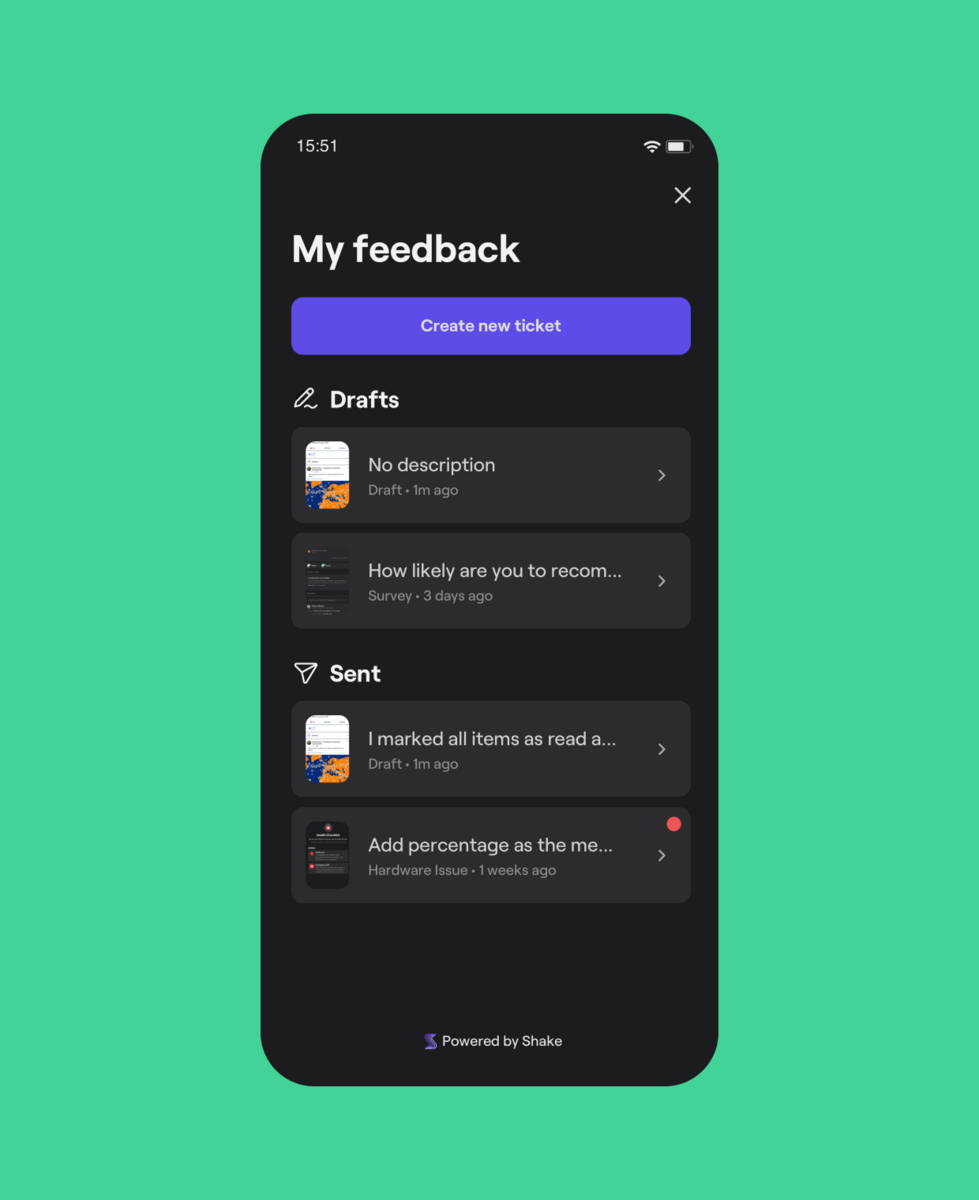
Users can learn how to use Shake and its many features quickly and intuitively, and it can help you to have the most important step of the beta testing process, giving feedback, figured out.
Clearly communicating the requirements you want your beta testers to meet is the first and most essential step you can take to attract suitable candidates for your beta program—narrowing down the pool of applicants to ones that will be useful for your program.
Have prospective testers fill out an application
Once you have a clear understanding of all the requirements beta testers’ should meet, it’s a good idea to have prospective testers fill out an application as a part of their signup process.
This practice can help you better understand their relevant expertise and experience, as well as their overall fit for the beta testing process.
The application form aims to provide a way for testers to send you their personal and contact information and to help you find the candidates who will be useful for your program.
When designing the application form, be sure to include a mix of open-ended and closed-ended questions.
Open-ended questions, such as “Tell us about your experience with mobile app testing,” allow candidates to provide more detailed and descriptive responses, giving you a better understanding of their skills and experience.
Closed-ended questions like “Do you have experience with bug tracking software?” can help you gather specific information about a candidate’s qualifications and expertise.
To help you better understand how an application form can help your tester recruitment process, we can look at an example from the coloring book app Recolor.
While recruiting for their beta testing program, the team at Recolor used the following application survey.
Recolor’s survey is a short one, with only 11 questions that cover their program’s requirements and the applicants’ overall motivation, as well as assess how active the applicants are on their software.
A question that covers the hardware and software requirements of the beta program is shown in the screenshot below.
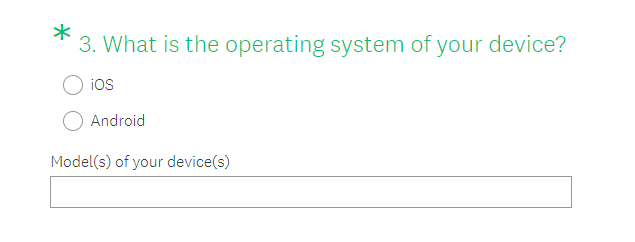
This question clearly asks for the OS and model of the applicant’s device, given that the Recolor beta version may not have run on some older devices and this is a good way to filter out users that own them.
Other than questions concerning requirements, Recolor’s survey has some other closed and open-ended questions that serve to assess the users’ current engagement with their product and their motivation to become a beta tester.
For example, here are two open-ended questions that serve this purpose:
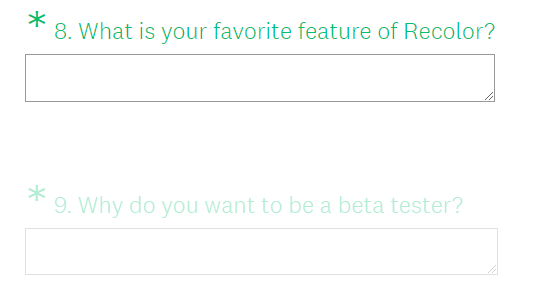
Including open-ended questions at the end of your application form can help you gather more detailed information about potential beta testers and assess their written communication skills.
That’s an important point, as you will receive many written reports from testers during the beta phase.
Overall, an application form is a useful tool in the recruitment process, allowing you to gather valuable information about each candidate and screen out unqualified applicants.
Look for applicants who have engaged with you before
One key factor to consider when recruiting testers for your beta program is whether or not they have engaged with your app or company before.
Beta testers who have already engaged either with the app you’re currently developing or some of your previous projects are more likely to provide valuable insights and feedback.
They are likely to better understand how your products work and can identify any issues or problems more effectively.
To find beta testers who have engaged with your app, you can look for the following individuals:
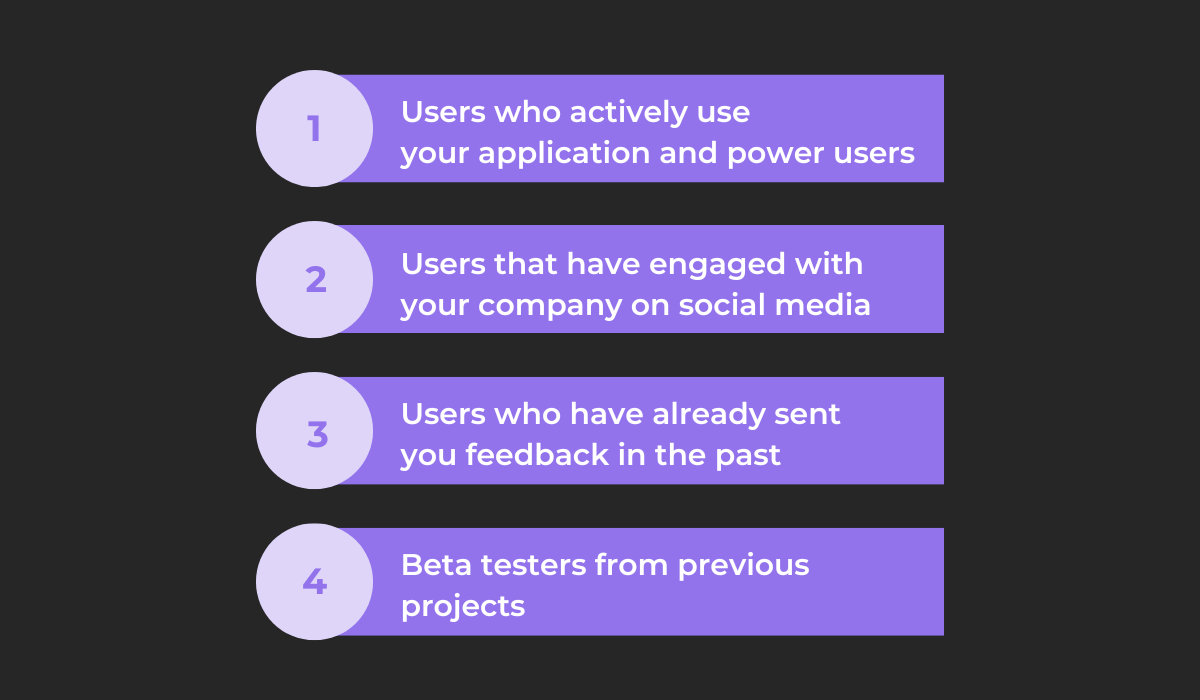
All of these types of users can be great beta testers, but we will focus on the first two groups—power users and those who have mentioned or reviewed your app on social media.
Reaching out to users who have already downloaded your app and use it often can be a simple and effective way to find beta testers.
These so-called power users are the ones who use your app almost daily and in ways that your average user won’t—having a deeper understanding of how your product works and all of its features.
These characteristics make them not only long-term customers but also good sources of information, feedback, and suggestions.
There are several traits that power users have which can help you recognize them.
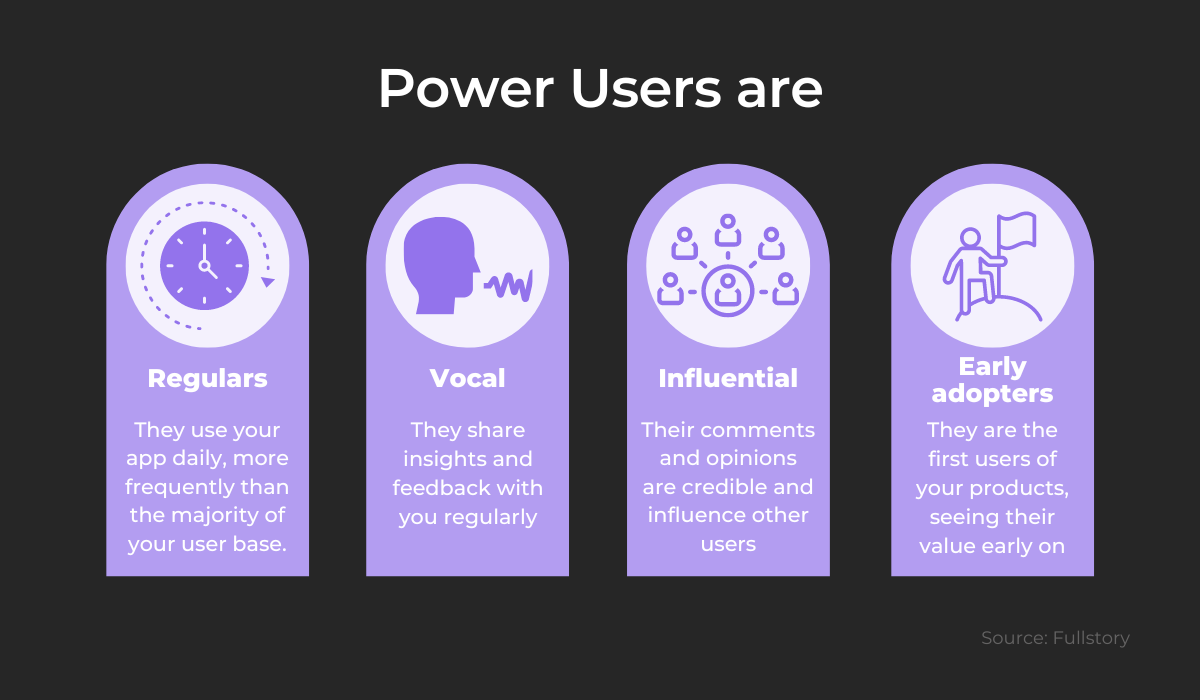
Looking for individuals that exhibit these characteristics among your user base, on social media, and in online forums is an excellent way to find potential beta testers that can help your beta phase substantially and give you valuable feedback and suggestions.
However, not all beta testers have to be power users —some can be regular users that find your product useful and are motivated to help you improve it.
Using social media or online forums to find users who have mentioned or reviewed your app can also be an effective way to recruit beta testers—these individuals have willingly analyzed and commented on your app in their spare time so they might be more likely to enjoy working as a beta tester.
Users who talk about your app on social media are likely to be interested in its development seeing as they have used it often enough that they felt the need to share their experiences with your app, or provided constructive feedback on it.
To reach out to these users, you can send a personal invitation directly to the most active and influential ones or create a social media post inviting them to participate in the beta testing process.
By reaching out to users who already use your app intensely or have engaged with you in the past, you can effectively recruit beta testers who will likely put in the effort and thoroughly test and review your app.
Choose testers that match your target audience
When considering beta testers that have previously worked and engaged with you on other projects, you might want to double-check whether they will be a good fit for the current beta test program.
If you worked with these users on projects that are very different from the current one, they might be a bad fit for it—even if they were highly engaged and motivated in the previous beta test program.
Ideally, beta testers should match your current target audience—the group of people that will use your product the most after it’s released and the one you are creating your app for in the first place.
As an example, if a company has created a SaaS bookkeeping app, their ideal audience profile might look like this:
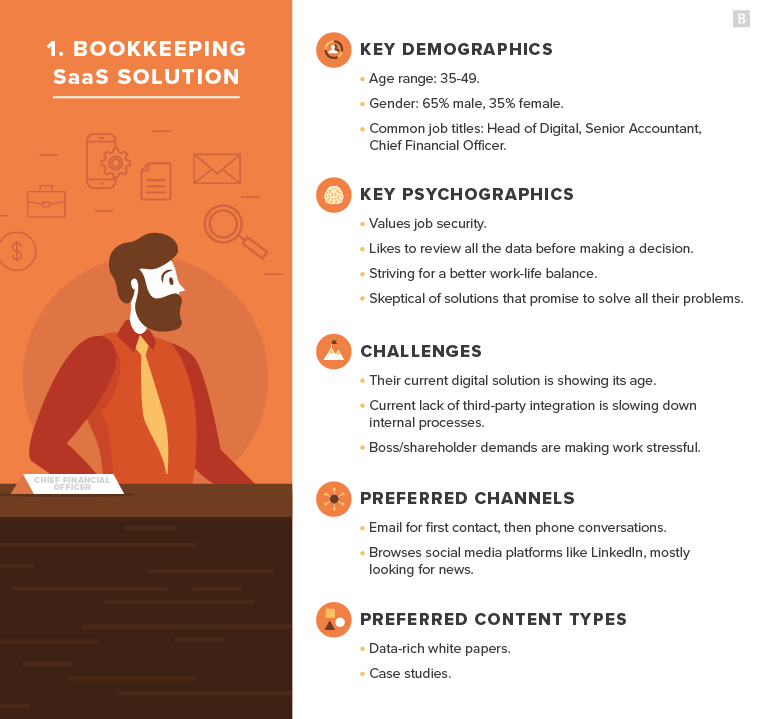
By selecting testers who fit the profile of your target audience and have relevant interests or lifestyles, you can ensure that the feedback you receive is representative of the experiences of your target users.
This practice can be especially valuable if your app serves a specific niche, as shown in the example above.
That’s because it allows you to gather feedback from users who are most likely to use your app regularly.
To find beta testers that match your target audience, you can consider using targeted advertising on social media or online platforms.
You can create ads for beta tester recruitment that are targeted toward specific demographics or interests and invite users who fit your target audience to participate in your program.
For example, if you plan on using Facebook Ads to attract potential testers, their platform has a feature that lets you create an audience you want to show your ad to, and you can make it as specific as you want.
Facebook’s Ads Manager has a lot of options to choose from, as shown below.
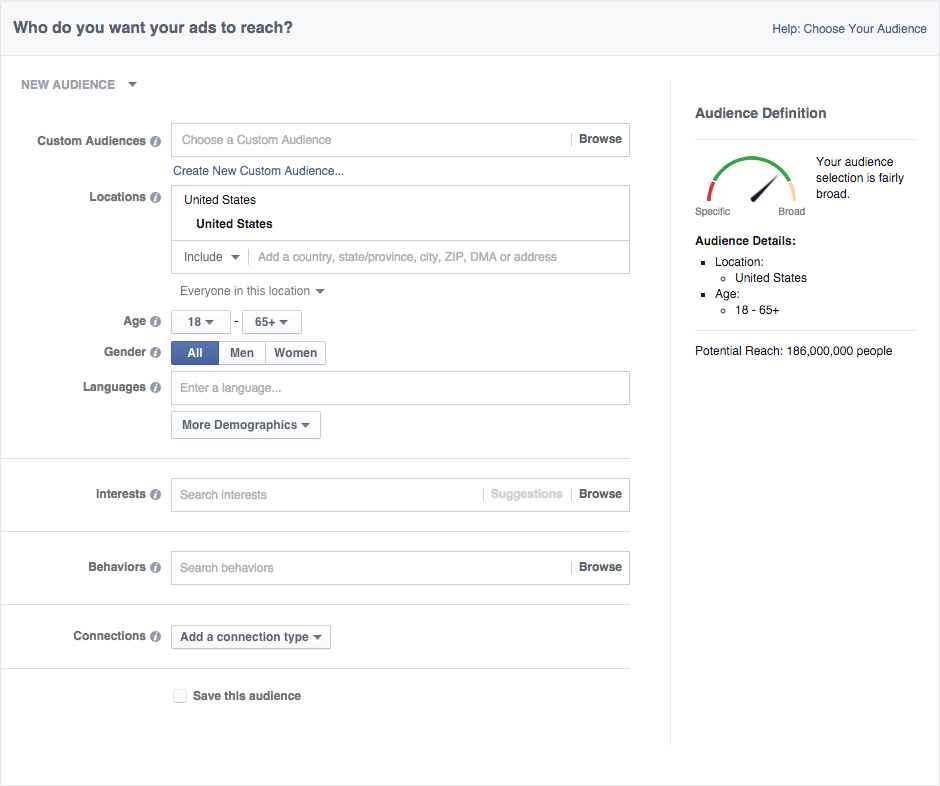
By targeting specific demographics, psychographics, and user behaviors, you can create highly targeted ads that reach your desired niche and attract beta testers who are most likely to be interested in your app.
If ads aren’t a part of your company’s budget, however, you can still leverage the power of social media and online forums to find your testers.
You can find and join online groups and communities that fit your target audience, and simply post that you’re looking for testers.
That was the strategy employed by Victor Ekelund, CEO of Albacross, who found his beta testers through a combination of methods, but stresses the value of online communities, saying:
We used social media channels such as Facebook and Twitter to find beta testers for our business. It should be mentioned that nothing works better than groups with shared interests on Facebook.
All in all, regardless of the exact method you use to find your beta testers, choosing individuals that match your target audience is an important consideration that you should not avoid.
Conclusion
Recruiting beta testers is rarely as easy as taking on everyone who applies for your program.
As an important aspect of your beta phase, the testers you choose should be an asset for this final part of the software development life cycle.
They should help your team create a polished product before releasing it to the public.
In this article, we’ve covered what we think are the crucial areas you might want to consider when looking for potential beta testers for your beta phase.
By following the best practices outlined in this article, we hope you will succeed in recruiting beta testers more effectively, and gather the feedback you need to improve and refine your mobile app.




